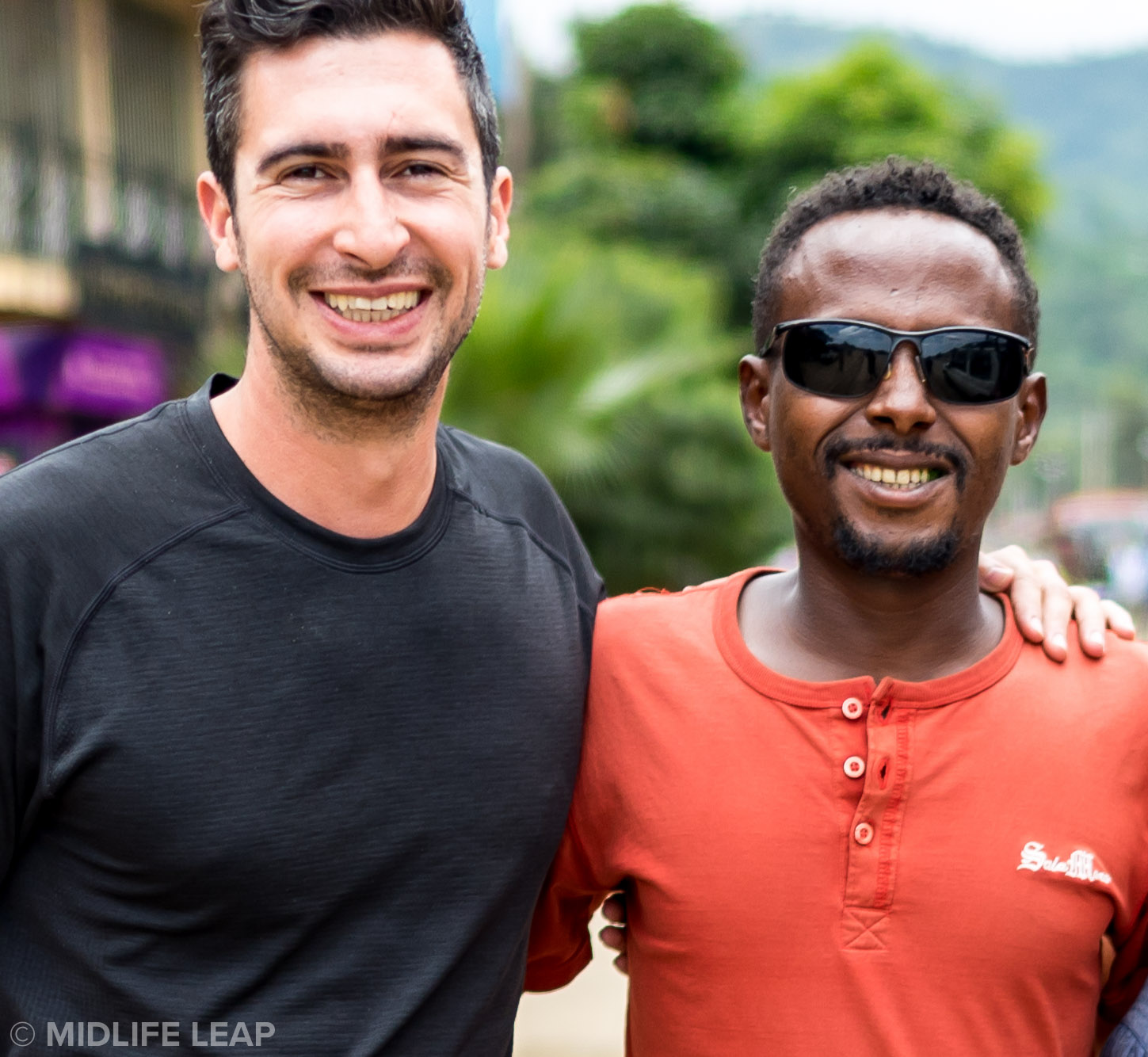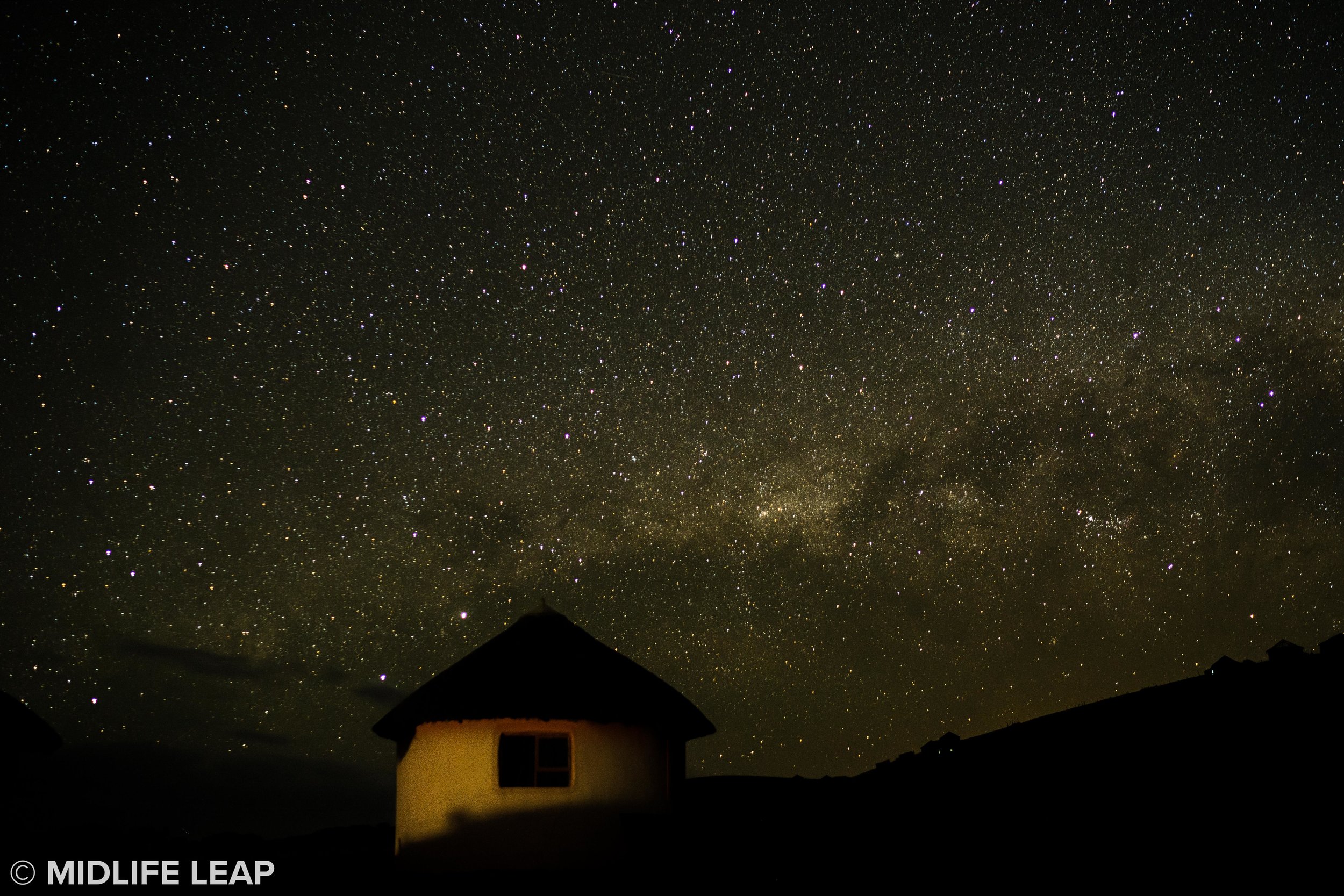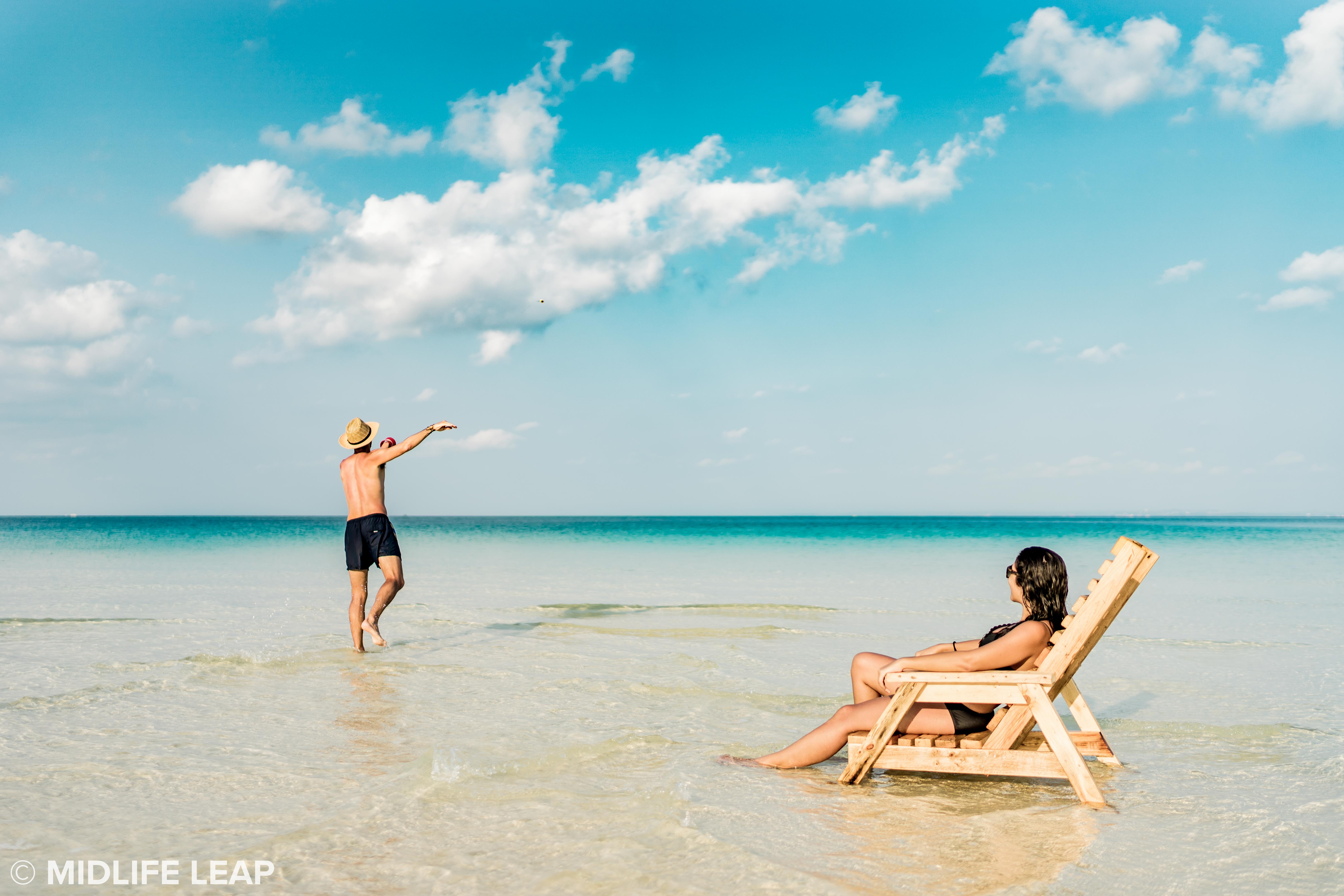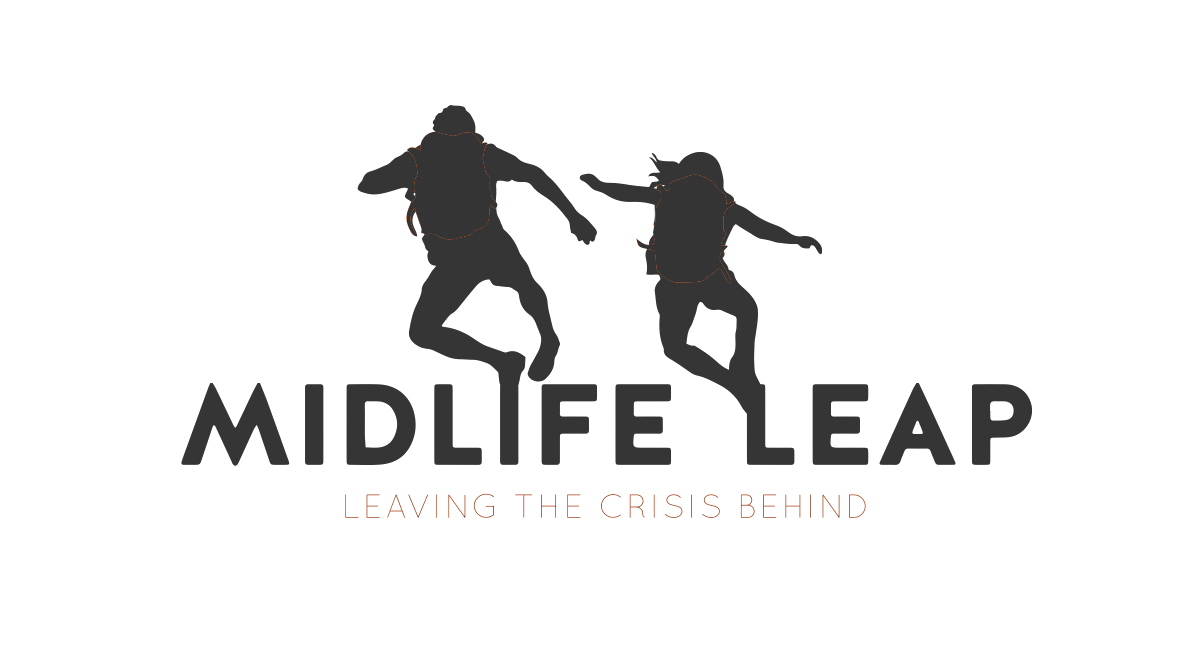One of the main reasons for visiting the Omo Valley is to see the local tribes still residing within its borders. Brian and I were floored when we learned that Ethiopia has over eighty different ethnic groups and tribes with more than forty of them in the Omo Valley region alone. Our plan was to visit three of them, the Hamar Tribe, the Karo Tribe, and the Mursi Tribe.
Milli set us up with a driver, Robel, and said they would both be at The Caravan Hotel at 8:00am to pick us up. We set the alarm and double checked it as always. Except as fate would have it, we woke up to the hotel phone ringing and Milli's voice alerting us of the time. It was 8:00am. Huh? Why didn't the alarm go off? Turns out, no service meant the phone didn't sync and we were still an hour behind. Actually, the phone kind of went bonkers and said it was July 20th at 1:00am.
True to form, Brian and I were scrambling to get everything packed and ready. We scarfed down some eggs and loaded the car while saying goodbye to Milli. The plan was never for Milli to join us during our travels through the country, (purely due to our budget constraints) but we received several notices from the US Embassy in Ethiopia regarding violent protest that had broken out in the North. We had talked to Milli about it before leaving the states, and he said depending on how things panned out he may join us for the second half of our trip up north. Just hearing him say that settled any doubts we were having about our visit, and trust me, we were having them.
So we were off. Finally. Just Brian, Robel, me, and the open road. Well, maybe not that open. The traffic in Addis is horrific but at least it was a road, something we would soon come to miss as we ventured down to our first destination, Arba Minch.
I think I can honestly say that Brian and I have never seen anything close to what we witnessed during our eight hour drive south to Arba Minch. The first time we saw a pack of donkeys (do donkeys run in packs? Who knows) in the middle of the road, we couldn't stop taking pictures. Looking back now, we laugh at what Robel must have thought. Most likely the Amharic equivalent to, “bless their hearts," in the US.
[The pictures below are not representative of the chaos. We will have a video soon.]
Omo Valley Traffic Jam
He's just a little guy!
Another Omo Valley Traffic Jam
We saw countless packs of donkeys, some with only the tail and nose visible due to all the hay packed on their backs. Endless herds of cattle with no agenda. Goats and sheep were sunbathing in the middle of the streets. More chickens crossing the road than all the knock knock jokes combined. Kids riding donkeys. Chickens riding cows. I think we even saw a goat riding a donkey once. It was a madhouse, and it was never ending.
As if riding through PeeWee’s Playhouse wasn’t enough, the road quickly transformed from pavement to pure dirt and rocks. Robel was a rockstar. I'm pretty sure I'm fluent in Ethiopian Honking now after ten days. There is a, "just FYI I'm behind you," honk; the, "I'm turning the corner and can't see you," honk; the, "get out of the way," honk; and the always friendly sounding, "I'm going to run you over before you hear the end of this honk," honk. Brian and I were amazed that we didn't see any roadkill. We weren't sure if this was due to the efficacy of the honking or perhaps the simple fact that roadkill becomes dinner. Either way, it was impressive.
We stopped for lunch a couple hours into the trip for our first bite of Ethiopian food. Sadly the restaurant didn't have my, "goto,” order of bayenetu, so I went with Robel's recommendation of spicy chicken and Brian went with his tried and true order of beef tibs. Everything tasted better than any of the Ethiopian food we had ever had. The injera was spongier; the sauce was richer; the tibs were juicier. The traditional way to eat is always with your hands, no forks in sight. Brian and I have had our fair share of Ethiopian food in SF, and so we’re used to the lack of silverware; however, when we started Robel informed us that locals only use their right hand. Whoops. It was not as easy at it sounds, and I still don't know how they manage to eat so gracefully. We never mastered that art, but it was fun to try.
After lunch, we had our first experience with proper Ethiopian coffee. We were so nervous walking up to the tin roofed shop packed with locals with nowhere to sit, a part of me actually considered turning back. I promise it was more intimidating than it sounds. As soon as we approached, everyone shuffled around to give us a seat, making us feel even more awkward. As I'm writing this, it's difficult to conjure up those emotions we were feeling since by the third day, we were advanced coffee drinkers; no sweat off our backs. One with the locals! And then the picture taking began. Everyone started taking pictures of us. It was always in a friendly manner but still somewhat strange. Were we supposed to smile? Did they want candid shots? We gave them a little of both and then pulled out our camera as well. Ahhh, now we understand how they must feel...all of the time. Drinking coffee in Ethiopia is an art form. It's actually called a, "coffee ceremony." Ordering your triple tall americano, extra hot with room is nothing in comparison to this, even if it wasn't the formal ceremony. On that note, no one has even heard of Starbucks (or McDonalds for that matter), and I’ll tell you, it was refreshing. Brian and I were lucky enough to experience several full coffee ceremonies over the next week, so we will post about that later.
Hand roasting coffee beans
Happy customers :)
When we arrived to our first stop, the Enzana hotel, we were told all the power had gone out in town, so we were left with no light and no hot water. Since this was more in line with what we were expecting, it wasn't that big a deal. That's what I kept telling myself, at least. We enjoyed a couple local beers, Wallia's and St. Georges, with Robel before retiring to our bat cave (you can hear the bats all night long which left me wide-eyed in bed fearful of finding them diving into my hair). We pulled out our cocoon sacks and pillow covers for the first time, trying to fall asleep, still vibrating from our "African Massage” (the nickname for the insanely bumpy dirt roads). We had another early morning waiting for us.
As we were continued down south to our first village, Turmi, Robel told us we would be stopping at one of the open air markets held by the Hamar and Bana Tribes. Milli actually rearranged our schedule to make sure we would be passing through since it only takes place once a week. Robel set us up with a local guide, Haila Dewit, and left us to wander on our own. Halla was wonderful. What could have been a wasted afternoon due to our nerves once again creeping up on us, instead turned into an entertaining and educational day watching locals exchange livestock for goods at the cattle market, metals heated and molded into tools under a tarp, and butter and honey being sold for rice and wheat. Basically, an intense game of Settlers of Catan. Brian bravely joined the locals for some home brew, and I shopped for beaded bracelets. Afterwards, we drank coffee.
The Cattle Market
Cool as a cucumber
Wooden statues of the Mursi Tribe
Coffee break with Halla, our guide from the market
A quick side note. When driving through these remote areas, children are everywhere. They are typically the ones responsible for watching, grazing, and protecting the animals. Since the tourist cars are identical and usually the only vehicles on the, “roads,” the children recognize them from a mile away. As if on cue, they run up to the cars when they approach with such determination stopping inches away joyously waving their hands. Their sunny, "Halloooos" drifting by our open windows every few kilometers was simultaneously heart warming and breaking. Robel told us they wanted our empty water bottles. Empty water bottles? I couldn't bear driving by another group of children only to hand out one or two empty bottles anymore. We stopped at a local market and stocked up on water, soap, and "caramellas" (candy) and tried to fill every reaching hand, restocking our supply every chance we got. In the end, it made us feel even more hopeless, but at least we were able to do something.
When we first set eyes on the Hamar tribe, I felt like we were transported back to the pages of our social studies books in elementary school. Memories of scanning ahead to make sure I could pronounce all the words in the paragraph before raising my hand to volunteer to read out loud about human scarification and rites of passage flooded back to me (was that just an ESL thing or did other people do this too?). It was like flipping through a National Geographic magazine except we were there, walking side by side, sitting in their homes, watching the blazing sun drift behind a grass and mud hut.
The Hamar Tribe
Sun rays on the Hamar Village
The women of the Hamar Tribe
The Chief of the Hamar Tribe
All the tribes had their similarities and differences. You pay an entry fee to the chief of each tribe. If you want to take any pictures, it cost 5 Birr which amounts to twenty-five cents. Even if the money exchange took away from some of the credibility of it all, it was nothing shy of authentic. Tourism is on the rise and just like you and me, they need to make a living as well.
The Karo Tribe
The Karo Village above the river
Face paint time!
The gentleman on the right is called, "Americano"
Trying to convince Brian to adopt
Decorated in different colors and dress, each tribe has a personality and identity. Their lives are harsh and isolated but also unique. Their dress, while sparse, utilizes skin and natural resources. The Hamar tribe donning green and red jewelry, metal necklaces indicating first, second, or third wife, and hair dyed with red clay; the Karo, masked in white clay, sporting feathers on their headpieces and skirts, and lip plugs piercing through their skin; and finally, the Mursi, the most recognized, with clay and wooden plates stretched between the skin of their bottom lips and bodies covered with ornate designs from scarification.
We felt more comfortable with the tribes than we did in the market place. The only unnatural part was the constant begging of, "please, fo-toe" from both children and adults alike but as I said, everyone has to make a living somehow and using tourism to their advantage seems more than fair. In the Karo village, situated on the high banks of the river, a young boy painted my face, an experience forever stained in my memory. I almost ran away with the most adorable baby girl, adorned in jewelry from head to toe. We showed everyone how Snapchat worked and barreled over together laughing at their innocent reactions to the different filters. At the Mursi tribe, tucked away in the Mago National Park, we pulled out the first aid kit and bandaged up several members showing us their various cuts and infections. I listened to music on our guides cell phone with the stoic, young Karibu. We passed out water, soap, and "caramellas" at the end of our visits. And of course, we drank coffee.
The Mursi Tribe
Karibu sharing his tunes with me
Scarification
Walking sticks and AK-47s
The woman on the left without her lip plate compared to the woman on the right
Blending in
We couldn't have experienced the magic we felt without all of our guides. They helped put everyone at ease, especially me, constantly reassuring me that we weren't being disrespectful in any way, which was always top of mind. I'm sure all the guides are wonderful, but let me be biased for a moment and say ours were the very best. Thank you Halla, for navigating us through the tented market, creating calmness from chaos. Thank you Kala for taking us to your home tribe, the Hamar, and helping us connect with the Karo people. Thank you, Dudu for calming all of my anxiety while visiting the Mursi people, the tribe I was most nervous about due to their reputation of being aggressive (which they were far from). An even bigger thank you for introducing Brian to khat (more on this later), his new favorite pastime, and welcoming us as if we were old friends.
Halla
Kala
Dudu
The beauty that lies in the Omo Valley is unparalleled. It is natural and raw. It is rich in traditions and landscape, in customs and language. A place were AK-47s are slowly replacing bamboo walking sticks, but rain dances and witch doctors are more than only fables. They live a simple yet demanding life. For us, these age-old traditions felt like stepping into the past, but for the people of the Omo Valley, it is every day life.
S+B
Missing: the second half of our sign #BeKindToOneAnother














